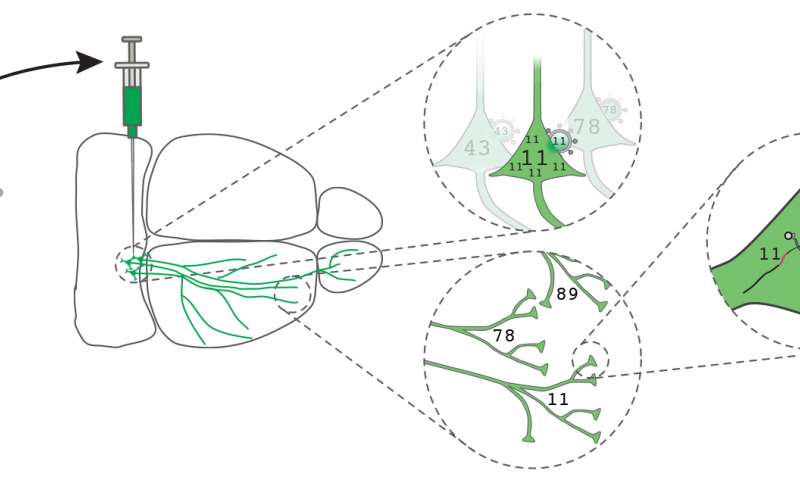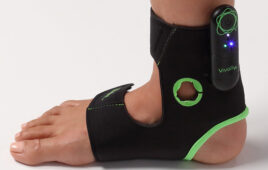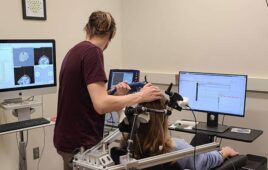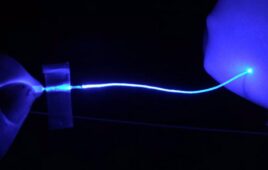Neuroscientists today publish in Neuron details of a revolutionary new way of mapping the brain at the resolution of individual neurons, which they have successfully demonstrated in the mouse brain.
The new method, called MAPseq (Multiplexed Analysis of Projections by Sequencing), makes it possible in a single experiment to trace the long-range projections of large numbers of individual neurons from a specific region or regions to wherever they lead in the brain—in experiments that are many times less expensive, labor-intensive and time-consuming than current mapping technologies allow.
Although a number of important brain-mapping projects are now under way, all of these efforts to obtain “connectomes,” or wiring maps, rely upon microscopes and related optical equipment to trace the myriad thread-like projections that link neurons to other neurons, near and far. For the first time ever, MAPseq “converts the task of brain mapping into one of RNA sequencing,” says its inventor, Anthony Zador, M.D., Ph.D., professor at Cold Spring Harbor Laboratory.

An injection into a “source” region of the brain contains a viral library encoding a diverse collection of barcode sequences, which are hitched to an engineered protein that is designed to carry the barcode along axonal pathways. The barcode RNA is expressed at high levels and transported into the terminals of axons in the source region where the injection is made. In each neuron, it travels to the point where the axon forms a synapse with a projection from another neuron. Credit: Cold Spring Harbor Laboratory
“The RNA sequences, or ‘barcodes,’ that we deliver to individual neurons are unmistakably unique,” Zador explains, “and this enables us to determine if individual neurons, as opposed to entire regions, are tailored to specific targets.”
MAPseq differs from so-called “bulk tracing” methods now in common use, in which a marker—typically a fluorescent protein—is expressed by neurons and carried along their axons. Such markers are good at determining all of the regions where neurons in the source region project to, but they cannot tell scientists that any two neurons in the source region project to the same region, to different regions, or to some of the same regions, and some different ones. That inability to resolve a neuron’s axonal destinations, cell by cell in a given region, is what motivated Zador to come up with a new technique.
One way of explaining the advantage of MAPseq over bulk tracing methods is to imagine being at an international airport, with the intention of getting on a flight to, say, Germany. “If you go to the international terminal, you see a long line of ticket counters,” Zador explains. “If you want to go to Germany, it’s not enough to take any airline at the international terminal. If you stand in line at the counter for Air Chile, you’re probably not going to be able to buy a ticket for Germany.”
“Those many airlines whose counters are adjacent serve many destinations, some of which overlap, some of which are unique. You can print out a map showing all of the foreign countries that all of the airlines serve from your airport, but that doesn’t tell you anything at all about individual airlines and where they go. This is the difference between current labeling methods and MAPseq. The ‘individual airlines’ in my example are adjacent neurons in a part of the brain whose ‘routes’ we want to trace.”
To read the full article, click here




